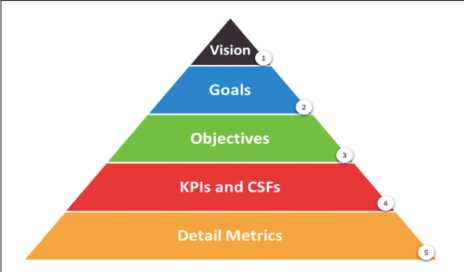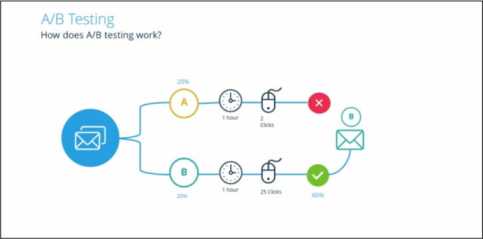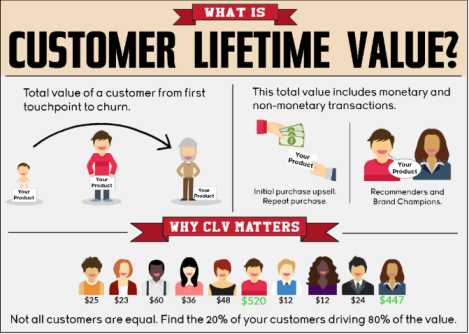
To effectively track and measure the performance of your digital promotions, it is crucial to implement a strategic approach that focuses on analysing the impact of your promotional efforts across various online channels. Digital promotions encompass a range of activities aimed at promoting products or services through digital means, such as social media campaigns, email marketing, and online advertising. By analysing data and key performance indicators (KPIs) related to your digital promotions, you can make informed decisions to enhance engagement, drive conversions, and maximise the impact of your promotional campaigns.
Promocious is a sub-brand of GameCloud Technologies Pvt Ltd, specialising in providing custom digital solutions to elevate brand visibility and enhance digital promotion strategies. We offer tailored services to help businesses improve their online presence, engage with their target audience effectively, and drive brand awareness. By utilising innovative digital solutions, we aim to assist companies in optimising their digital marketing campaigns, measuring success through key performance indicators (KPIs), and achieving their marketing objectives. Through our expertise in digital promotions and brand visibility enhancement, we play a crucial role in helping businesses navigate the competitive digital landscape and maximise the impact of our promotional efforts. Our focus on delivering customised solutions aligns with the core principles highlighted in the blog, emphasising the importance of defining objectives, tracking KPIs, utilising analytics tools, and measuring ROI to gauge the effectiveness of digital promotion campaigns.
Setting Clear Goals and Defining KPIs

Setting clear goals and defining Key Performance Indicators (KPIs) is essential in digital marketing to ensure campaigns are aligned with business objectives and can be effectively measured. Goals should be specific, measurable, achievable, relevant, and time-bound (SMART) to provide a clear roadmap for success. KPIs, on the other hand, are quantifiable benchmarks that measure progress towards these goals. They help marketers track the effectiveness of their strategies and campaigns, guiding decision-making and optimisation efforts. By setting clear goals and defining relevant KPIs, marketers can ensure that their digital marketing initiatives are purpose-driven, measurable, and aligned with overall business objectives.
Some common mistakes to avoid when setting goals and KPIs for digital promotion campaigns include:
- Failing to Speak to Your Audience’s Needs and Wants:
Mistake: Not understanding your target audience’s needs, behaviours, and concerns can lead to ineffective messaging and campaigns.
- Failing to Map out the Buyer’s Journey:
Mistake: Neglecting to plan the buyer’s journey can result in missed opportunities to guide potential customers towards conversions and loyalty.
- Not Tracking Your KPIs:
Mistake: Failure to monitor key performance indicators (KPIs) can lead to missed insights on campaign effectiveness and hinder the ability to capitalise on conversion opportunities.
- Not Having a Clear Strategy:
Mistake: Lack of a well-defined digital marketing strategy can result in scattered efforts, inefficient resource utilisation, and failure to achieve business goals.
- Neglecting Mobile Optimisation:
Mistake: Overlooking mobile optimisation can lead to a poor user experience, high bounce rates, and missed opportunities to engage with mobile users.
- Not Leveraging Social Media Properly:
Mistake: Using social media solely for promotion without engaging with the audience can hinder relationship-building and community fostering efforts.
- Lacking Realistic Digital Marketing Goals and Goal Tracking:
Mistake: Setting unrealistic goals or failing to track progress towards goals can lead to inefficiencies, lack of focus, and inability to measure campaign success effectively.
- Targeting the Wrong Audience:
Mistake: Failing to research and target the right audience can result in wasted resources, irrelevant content delivery, and missed opportunities for engagement and conversions.
To identify the right Key Performance Indicators (KPIs) for digital promotion campaigns, it is crucial to align them with your business objectives and digital marketing strategy. Here are steps based on the provided sources:
- Understand Your Business Objectives: Define specific, measurable, achievable, relevant, and time-bound (SMART) objectives for your digital promotion campaigns.
- Analyse Past Performance and Industry Benchmarks: Evaluate previous campaign performance and industry benchmarks to gain insights into what has worked well in the past and understand industry standards.
- Consider Campaign Objectives: Tailor KPIs based on the specific goals of each campaign, whether it’s brand awareness, lead generation, reputation management, or sales.
- Choose a Diverse Range of KPIs: Select KPIs that cover the entire marketing funnel to monitor the effectiveness of your digital marketing efforts, considering metrics like engagement, keyword ranking, website traffic, conversions, and cost per acquisition.
- Link KPIs to Business Success: Focus on KPIs that directly tie marketing activities to measurable business outcomes, such as conversions, sales, and cost-effectiveness, to ensure alignment with overall business goals.
- Set SMART Objectives: Formulate KPIs that are specific, measurable, achievable, relevant, and time-bound to provide a clear roadmap for your digital marketing campaigns and ensure they are purpose-driven and targeted.
By following these steps and customising your KPI selection to match your business goals and campaign objectives, you can effectively identify the right KPIs for your digital promotion campaigns and measure their impact on achieving your desired outcomes.
How can a/b testing be used to optimise digital promotions?

A/B testing, also known as split testing, is a powerful tool that can be effectively utilised to optimise digital promotions across various online channels. By comparing two variations of a marketing asset, such as a landing page, email, or advertisement, marketers can measure the performance difference between the two versions to determine which one resonates better with the target audience. This process involves presenting one version to a specific group and the other version to another group, allowing for a direct comparison of their effectiveness.
In the realm of digital promotions, A/B testing plays a crucial role in refining promotional strategies and enhancing campaign performance. Marketers can leverage A/B testing to experiment with different elements like call-to-action text, ad copy, images, colours, and layout to identify the most impactful variations that drive higher engagement and conversions. By systematically testing and analysing these variations, marketers can gain valuable insights into what resonates best with their audience and tailor their promotional content accordingly.
Moreover, A/B testing provides a data-driven approach to decision-making in digital promotions. It eliminates guesswork by offering concrete evidence of the effectiveness of different marketing elements. Through A/B testing, marketers can measure key metrics like traffic, click-through rates, conversions, and campaign goals to evaluate the success of their promotional efforts. This data-driven approach enables marketers to make informed decisions based on real-time performance data, leading to more effective and targeted digital promotions that yield better results.
Furthermore, A/B testing allows marketers to continuously optimise their digital promotions by iterating on successful variations and refining underperforming elements. By analysing the results of A/B tests and making data-driven adjustments, marketers can fine-tune their promotional strategies, enhance user experience, and maximise the impact of their campaigns. This iterative process of testing, analysing, and optimising based on A/B test results empowers marketers to create more engaging, relevant, and successful digital promotions that resonate with their target audience and drive desired outcomes.
Some examples of elements that can be tested in A/B testing for digital promotions include:
- Email Marketing:
- Subject lines
- Email copy and content
- Call-to-action (CTA) buttons
- Personalisation elements
- Design layout and visuals
- Website Optimisation:
- Landing page elements
- Headlines and subheadings
- Images and videos
- Forms and lead generation elements
- Navigation and user experience features
- Digital Advertising:
- Ad copy and messaging
- Ad visuals and creatives
- CTAs in ads
- Target audience segments
- Ad placement and timing
- Social Media Campaigns:
- Post captions and content
- Visual content (images, videos)
- Posting times and frequency
- Hashtags and keywords
- Engagement strategies
- E-commerce Optimisation:
- Product descriptions
- Pricing strategies
- Product images
- Checkout process
- Recommendations and upselling techniques
By testing these elements through A/B testing, marketers can gather valuable insights, optimise their digital promotions, and make data-driven decisions to enhance the effectiveness of their campaigns.
Analysing ROI and Conversion Metrics
Analysing Return on Investment (ROI) and conversion metrics is crucial for optimising digital promotions as it provides valuable insights into the effectiveness of marketing campaigns and helps in making data-driven decisions. ROI measures the revenue generated from marketing efforts relative to the cost incurred, indicating the profitability and efficiency of campaigns. By analysing ROI, marketers can identify high-performing strategies, allocate resources effectively, and optimise budget allocation for maximum impact.
Conversion metrics, such as conversion rate, cost per conversion, and customer acquisition cost, offer a detailed view of how well campaigns are driving desired actions from users, such as purchases, sign-ups, or downloads. Understanding these metrics allows marketers to refine targeting, messaging, and user experience to improve conversion rates and reduce acquisition costs.
By diving into ROI and conversion metrics, marketers can pinpoint areas for improvement, refine targeting strategies, optimise ad spend, and enhance overall campaign performance. This data-driven approach enables marketers to adapt quickly to changing market dynamics, refine their digital promotion strategies, and ultimately achieve better results in a competitive digital landscape.
How can CAC and CLV influence the success of digital promotions?

Customer Acquisition Cost (CAC) and Customer Lifetime Value (CLV) are pivotal metrics that significantly influence the success of digital promotions. CAC represents the total cost incurred to acquire a new customer, encompassing expenses related to marketing, sales, and other acquisition efforts. On the other hand, CLV estimates the value a customer brings to a business over their entire relationship. Understanding these metrics is crucial as they directly impact the profitability and sustainability of digital promotion campaigns.
The relationship between CAC and CLV is fundamental in optimising digital promotions. A lower CAC compared to CLV indicates a healthy business model where the cost of acquiring customers is outweighed by the value they bring over time. By focusing on reducing CAC through efficient marketing strategies and enhancing CLV through customer retention efforts, businesses can improve their overall profitability and success in digital promotions.
Moreover, analysing CAC and CLV allows marketers to make informed decisions regarding resource allocation, campaign optimisation, and customer relationship management. By leveraging these metrics effectively, businesses can tailor their digital promotion strategies to attract high-value customers cost-effectively, enhance customer loyalty, and drive long-term revenue growth in competitive digital landscapes.
Some examples of successful customer loyalty programs include:
- GEM Bite Club: GEM, a nutritional food and essentials brand, offers a tiered referral system through its GEM Bite Club loyalty program, providing unique benefits to members.
- Starbucks Rewards: Starbucks Rewards program allows customers to earn loyalty stars with each purchase made through the Starbucks app, which can be redeemed for free drinks, food, and merchandise, enhancing customer engagement and loyalty.
- XPLR Pass by The North Face: The North Face’s XPLR Pass loyalty program offers customers the opportunity to earn points by purchasing merchandise or attending special events. Members can redeem their points for unique travel experiences and gain early access to exclusive products, fostering a strong connection between consumers and the brand.
- DSW VIP by Designer Shoe Warehouse: Designer Shoe Warehouse’s VIP program provides customers with exclusive benefits such as free shipping, birthday rewards, and points accumulation for future discounts, enhancing customer retention and engagement.
These examples showcase how diverse industries implement customer loyalty programs to incentivise repeat business, enhance customer engagement, and foster long-term relationships with their clientele.
Conclusion
In conclusion, tracking and measuring the performance of your digital promotions through a data-driven approach is vital for enhancing the effectiveness of your promotional efforts. By leveraging key metrics and analytics tools, you can make informed decisions, optimise your promotional strategies, and stay ahead in the competitive digital landscape. Continuously monitoring and analysing the performance of your digital promotions will enable you to adapt to changing trends, engage your target audience effectively, and drive success in your promotional campaigns.
